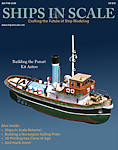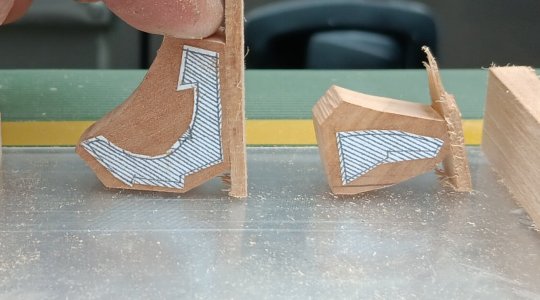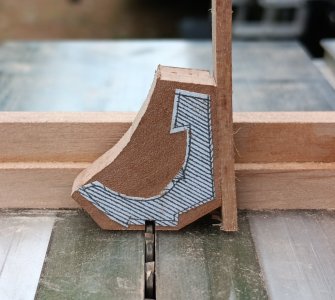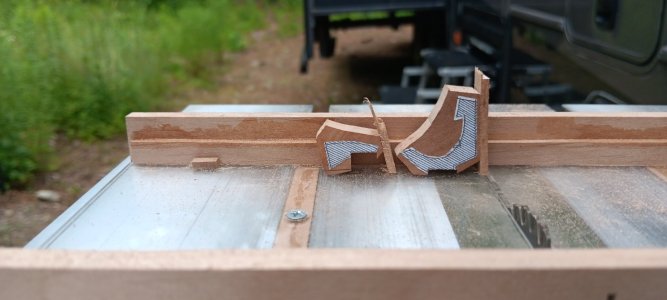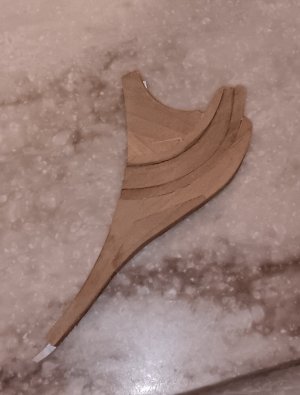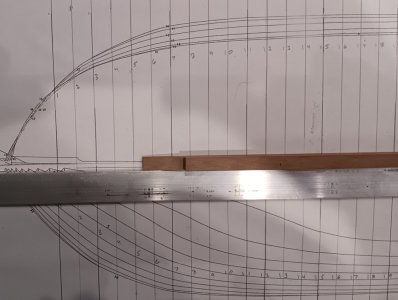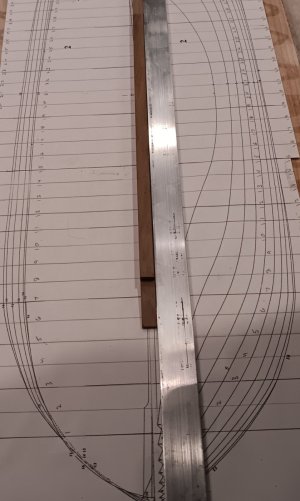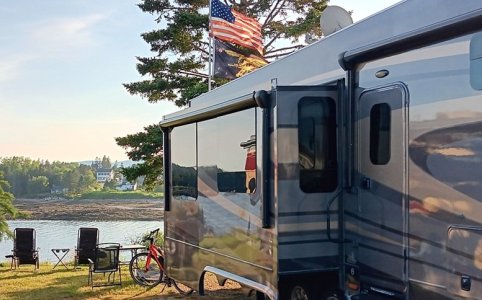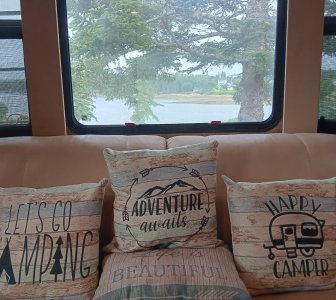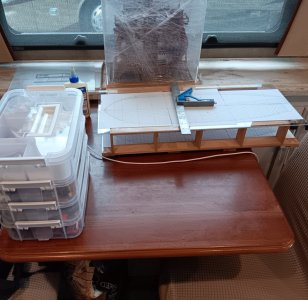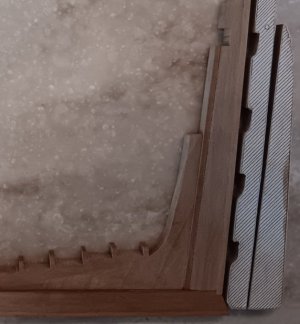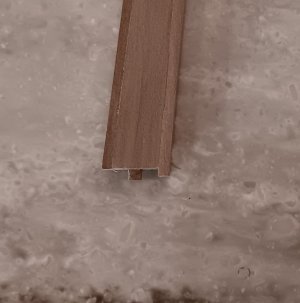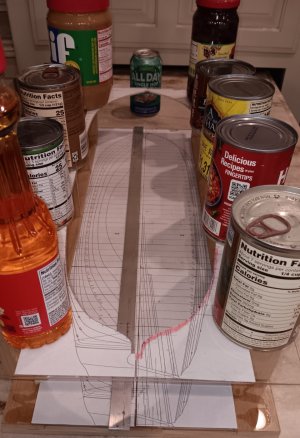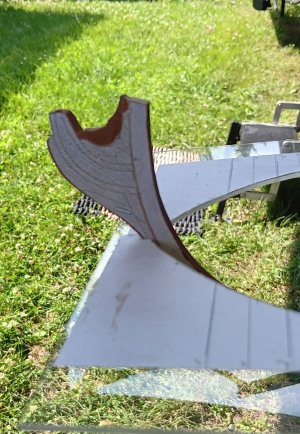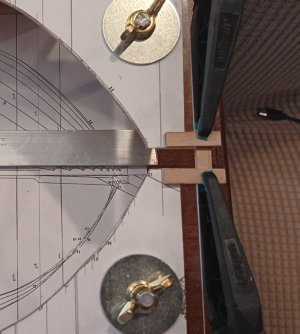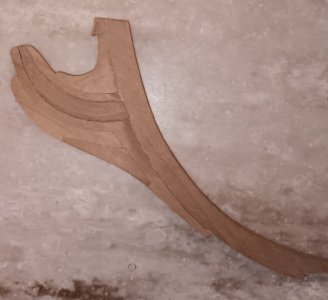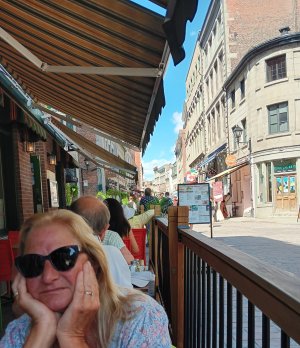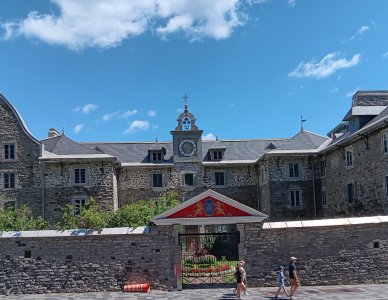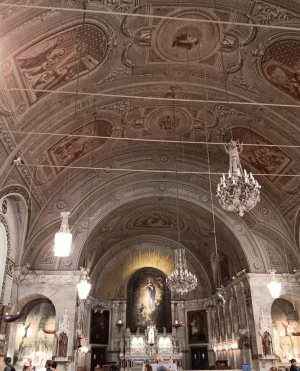$3 sliding cross-cut table for Proxxon table saw.
I have no milling machine to cut frame slots in the keel.
Shipyard workers quickly realized the Proxxon table saw needs a sliding cross-cut table!!
The provided attachments are not capable of cutting these slots to the required accuracy. This is the "foundation" of the entire model, so accuracy is crucial!!
SO...off to the ACE hardware store in tiny Belfast, Maine, to build one for under $3!
Below are the parts purchased (Less than $3 for the screws):
2ft of scrap hardwood (1.5" x 0.25"). (Free from shipyard scrap pile)
8 x M3 countersink machine screws (Length 12mm / thread diameter 3mm)
6 x M3 countersink machine screws (Length 6mm / thread diameter 3mm)
0.1 inch thick plexiglass 5" x 10" (ACE gave me a 12" x 5" piece from a broken slab for free)
Steps with photos:
1. Cut two strips 0.464" wide x 0.172" thick x 10" long)
2. Cut two strips (0.300" wide x 0.15" thick x 10" long)
3. Slide the wider strip into the travel groove
4. Using instant glue, set the narrower strip on top, apply pressure.
NOTE: continue to move the two pieces back and forth in the groove for two minutes while applying pressure. This will ensure none of the instant glue bonds to the metal of the table saw guides.
5. Pull them from the slots and use a file to remove and glue that may have leaked from the joint.
6. Ensure they slide freely, without binding. If they bind, find the "high" spots and file or sand till they slide smoothly.
Result:
View attachment 529848
1. Cut the 0.1" plexiglass to 5" x 10". If you have enough cut to 10" x 10" (I didn't).
2. Place the wood runners in the slots. Place 3 strips of paper under the runners, so they stand "slightly proud" of the table.
3. Run instant glue along the top of the runner and press on the plexiglass squarely for two minutes.
SAME NOTE: continue to slide the cross-cut table so no glue can bind to the metal
4. Slide back and forth until it slides freely (file or sand if necessary...mine slid freely at this point).
View attachment 529825
1. Pre-drill three holes on each guide, using a 3/32 drill bit for the machine screws. I went all the way through (then sanded the bottom).
2. Use a 15/64" drill bit to make the countersink hole for the screw heads.
3. Insert the 3 screws (use 5 if your plexiglass is 10" x 10").
4. Result should look like this
View attachment 529826
1. Cut two pieces (0.25" x 0.65" x 10") for the bottom "wood rest" and "top brace"
2. Using jigs/stops/clamps/etc, PRACTICE setting the bottom "wood rest" EXACTLY PERPENDICULAR (you only get one chance).
3. Use instant glue to set the bottom "wood rest"
4. Use instant glue to set the "top brace". This is not critical to make exactly perpendicular.
5. Use the eight 12mm M3 screws to reinforce these glued joints. Ensure these are countersunk, so they do not drag/scrape your table.
See below:
View attachment 529827
1. Run the sliding cross-cut table through a blade raised 0.50" (I felt this was adequate for 1/4" ship modeling). This will give you 0.40", available for cross-cuts.
2. Do a test and experiment with blade height adjustments/lock stops/etc
3. You are now ready to begin cutting accurate and repeatable frame slots in your keel.
View attachment 529828
Shipyard will start milling the frame slots in the keel soon!



